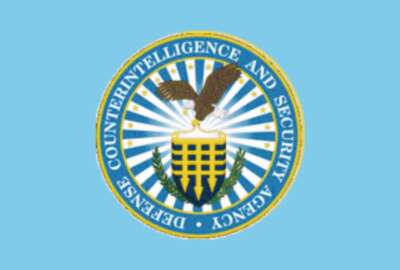VIDEO: Blind NIH employees form own resource-sharing group
The 3 Blind Mice started with three blind employees at NIH and has now grown to nearly 50. The group aims to increase awareness about blindness and low vision...
Teresa Shea takes off at a brisk pace through the National Institutes of Health’s Bethesda, Md., campus, her white cane lightly tapping the sidewalk. Shea lost most of her vision suddenly in 2006 due to an illness shortly before her 25th birthday. Her vision is now 20/1000.
When she first learned how to walk with a cane, Shea said she tried moving slowly but ended up walking in a crooked line. Walking at her normal speed, Shea said she stays on a straight path.
A fellow NIH employee approached Shea one day and commented on the confident way she walked. He had retinal pigmentosis, a progressive disease that deteriorates vision, and was worried about how he would manage without seeing.
“We became friends just chatting about blindness … and that opened up this other side of things where I realized there were not a lot of blind and low-vision resources that were easily accessible here at the NIH for employees,” Shea said.
Shea, her new friend and another NIH employee began calling themselves the 3 Blind Mice and from that developed the resource-sharing group of the same name less than a year ago. Now, the group has grown to nearly 50 “mice.”
Story continues below video.
“It’s about educating ourselves and enhancing the resources that we have access to so we can better support the mission of the NIH and the work that we do here,” Shea said.
The group organizes activities, such as stations at Take Your Child to Work Day, where NIH employees and their children can learn how to walk with a cane wearing blindfolds or check out gadgets like talking clocks.
Hiring the person, not the disability
Shea has resolved not to let her blindness be the end of her life. At a school for the blind in Baltimore, Shea relearned how to do basic daily tasks wearing sleep shades that blocked out all light. The training gave her back her confidence but did not fully prepare Shea for finding work.
At a job fair organized by an employment agency for the blind, Shea said the organization told her she was qualified for a retail position. Shea had previously worked for a company reselling technology to the government.
“I was furious. I was like, ‘you’ve got to be kidding me,'” she said.
In February 2011, NIH hired Shea as a relationship manager for the Center for Information Technology. She is one of the feds with disabilities hired into the government since President Barack Obama’s 2010 executive order directing agencies to hire 100,000 more people with disabilities into the federal government by 2015.
But the government is not on track to meet that goal, hiring only 20,000 people with disabilities in fiscal 2010 and 2011 combined.
The actual number, however, might be higher. A May report by the Government Accountability Office found the assessment of federal disabilities employment may be difficult to determine because some employees do not disclose their disability “due to concerns about how the information may be used,” the report said.
Chris Booher, a grants management specialist at NIH, said a common misconception is blind people always need help.
“If a blind person has the right training, if they have the right technology, if it’s a job involving a computer where they need the technology, then they can lead a productive life just like anybody else,” Booher said.
Both Shea and Booher use adaptive technology to help them do their jobs, including computer screen reader software. Shea travels often to the main NIH campus and works on her iPad during the commute.
“It’s not about hiring the disability. It’s about hiring the person,” said Booher.
Booher said bringing on someone with a disability means bringing on an employee who is used to “thinking outside the box.”
“They’ve experienced life in a different way. They think about life in a different way. … It just helps broaden the workforce,” Booher said.
Once a person with disabilities is hired on, federal managers need to make sure they are communicating with the employee about what their work needs are, Booher said. For example, Booher uses JAWS screen-reading software but, he said, someone else might prefer a different program. Also, for employees with progressive vision loss, the needs might change over time.
Shea points out that vision loss “is a very real thing” in the federal workforce and will become a bigger issue as the current workforce ages.
“Blindness is a scary thing, both for myself and others, and that’s part of the reason for what we’re doing here and what the 3 Blind Mice at the NIH [is doing] — to talk about it,” Shea said.
Shea is a speaker today at the Next Generation of Government Summit in Washington. Her speech is entitled, A Journey into Blindness.
RELATED STORIES
Fear hinders hiring of people with disabilities
Plans to hire disabled people part of overall hiring strategy
Labor toolkit helps in disability hiring
Section 508 revision nears home stretch but compliance problems remain
Copyright © 2024 Federal News Network. All rights reserved. This website is not intended for users located within the European Economic Area.





